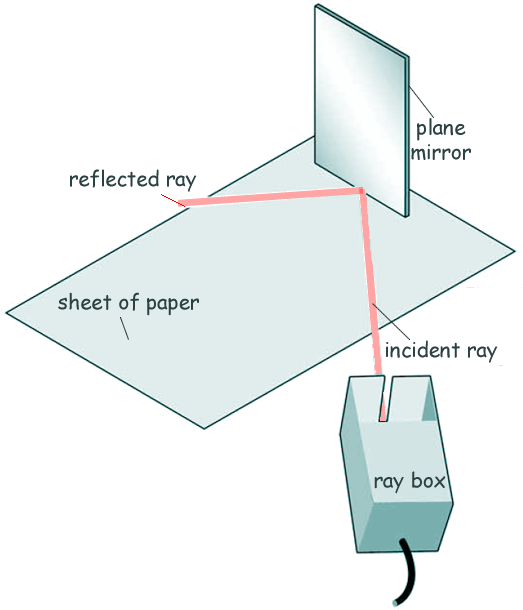GCSE level questions on light Q2. The diagram shows the apparatus a student used to investigate the reflection of light by a plane mirror. The student drew four ray diagrams for each angle of incidence.
The student then carefully measured the angle of reflection from each diagram. The following table gives the student's results.
(a) For each angle of incidence, the angle of reflection has a range of values. This is caused by an error. What type of error will have caused each angle of reflection to have a range of values? A random error [1 mark] (b) Suggest what the student may have done during the investigation to cause each angle of reflection to have a range of values.
[1 mark] (c) Estimate the uncertainty in the angle of reflection when the angle of incidence is 50°. Show how you determine your estimate. At 50° the largest reading was 56° and the smallest was 46° so the range = 56° - 46° = 10° Hence the uncertainty is 51 ±5º [2 marks] (d) The student concluded that for a plane mirror, the angle of incidence is equal to the angle of reflection. Explain whether you agree with this conclusion. Use examples from the results in the table in your answer. Within the limits of experimental error the angle of incidence and the angle of reflection are equal. For most of the angles eg at 20º / 30º / 40º You could work out the average for each angle and the range of measurements to illustrate your answer. [2 marks] (e) What extra evidence could be collected to support the student's conclusion? Results could be collected for angles of incidence not yet measured such as 10º and 60º [1 mark] (f) State one change the student should make to the apparatus if he wants to use the same method to investigate diffuse reflection. Replace the mirror with an irregular reflecting surface
[1 mark] (Total 8 marks) |
Follow me...
|
||||||||||||||||||||||||||||||||






